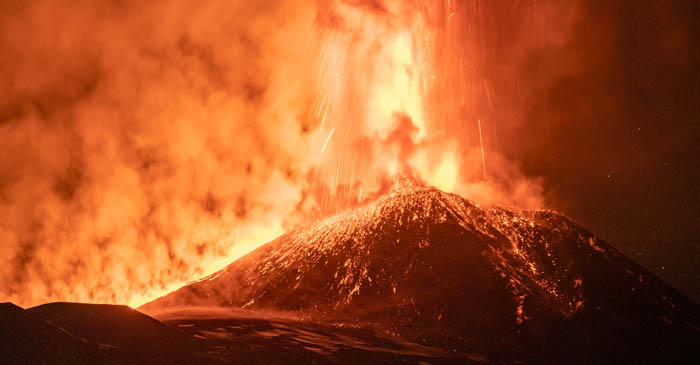
Etna returns to show off with an eruption of intense energy. This time there was a rare phenomenon, a sort of “volcanic storm” captured by the shot of the photographer Emilio Messina.
The activity of the South-East crater has changed from Strombolian to lava fountain with the emission of a cloud of lava ash about 10 kilometres high which disperses in the western sector of the volcano.
The shot by the Sicilian photographer seems to date back to the prehistoric era and shows in all its power the moment when the lightning comes out of the crater, surrounded by a dark cloud—a contrast with the bright red of the lava that leaves you speechless.
If it had been a volcanic storm, as reported by Wikipedia, an electrical discharge would have occurred generated in a volcanic plume or its periphery. These plumes of dust and gas are electrically charged, often producing spectacular lightning strikes.
Another hypothesis is that the triboelectric effect produced it, a phenomenon that consists in the transfer of electrical charges and therefore in the generation of a voltage between different materials (at least one of which is insulating) when they are rubbed together.
However, how this spectacle of nature was generated is marginal compared to the magnificence this active volcano offers us every time it decides to wake up. A show that surprises us and fascinates us more and more.


